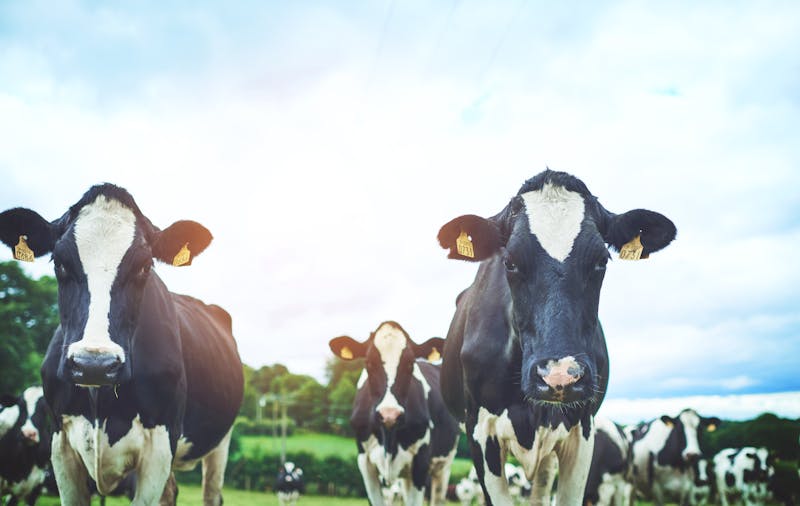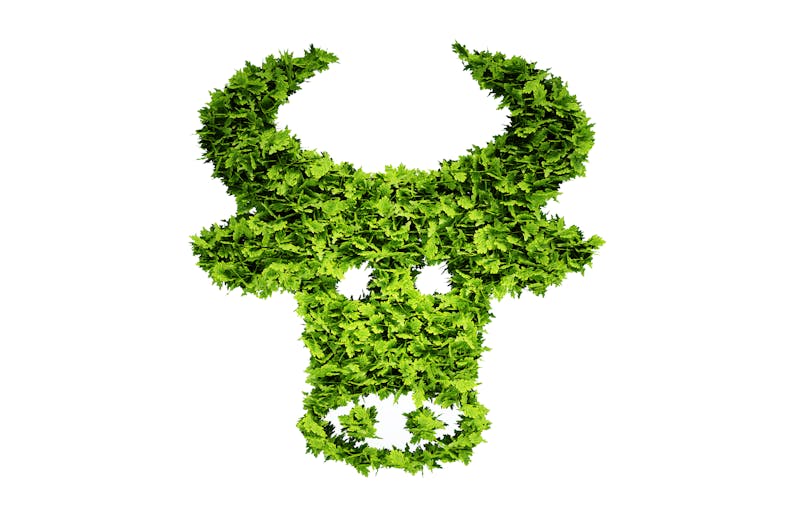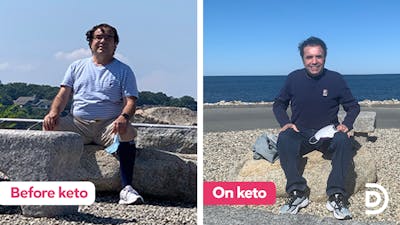The green keto meat eater, part 1
Part 1 of this series, below, examines the state of the current war on meat and how a conscious keto eater can find peace and a path forward.
Part 2 explores the link between cows and climate change and how a burgeoning worldwide movement in holistic regenerative agriculture is using cows to help draw carbon out of the atmosphere and store it in the soil.
Part 3 looks at the economics and practicalities for more wide-scale regenerative agriculture and how policies, emerging carbon markets, consumer choice, and other mechanisms can foster agricultural incentives to produce green animal products that are widely available, affordable and helping the planet reverse greenhouse gas emissions.
Part 1: Finding a path of peace in the meat-eating wars
If you eat meat and other animal products on your low-carb or ketogenic diet, are you helping to destroy the planet?
If you read the news these days, it is easy to feel shamed and blamed that you are. In early October, 2018, the UN Intergovernmental Panel on Climate Change (IPCC) warned we have just 12 years to limit the impact of climate change catastrophe, raising the stakes for action even higher. Agriculture and meat eating is a constant target.
“Avoiding meat and dairy the single biggest way to reduce your impact on the earth” blared The Guardian earlier this year, quoting a study out of Oxford University, published in Science in June 2018. Other headlines include “Meat is Horrible” or “Cows worse than cars“.
Influential writers like the UK’s George Monbiot persuade legions that the best way to save the planet from green house gas emissions is to drop meat and dairy. Films like Cowspiracy ramp up the rhetoric and guilt meat eaters into becoming vegetarians or vegans. In short, the message, everywhere these days, is that if you care about the planet, eating meat on a low-carb keto diet is evil and selfish.
For some anti-meat eaters, the main reason is animal cruelty, especially the inhumane treatment in industrialized factory farming and confined animal feeding operations (CAFOs.) But even happy, well-cared-for livestock raised in the most pastoral and gentle of settings must eventually die to serve our appetites. Each person has to square that reality with their own beliefs, which just like religious or spiritual belief, is not really open to debate, data and evidence. That is not what this series is about.
Cows and climate change
What we are exploring in this series, instead, is the controversy over livestock’s role in climate change and environmental damage.
All agriculture contributes greenhouse gas (GHGs) emissions to the atmosphere, but raising livestock contributes the most, chiefly carbon dioxide (C02), methane (CH4) and nitrous oxide (N2O). These emissions come predominantly from fermentation in the ruminant’s stomach (cow farts and belches of methane), manure handling, and fossil fuel burning in raising, processing, and transporting livestock and their products.
The generally agreed upon figure is that livestock contributes 14.5% of all GHGs — significant to the climate change picture, but not as high as the erroneous 51% that is widely cited and promoted in films like Cowspiracy. Of that 14.5%, it is estimated that cows — dairy and beef production —contribute 65% of all the livestock GHG emissions. Some GHG experts say that 14.5% figure is not accurate. University of California, Davis, researcher Dr. Frank Mitloehner, says in North America only 3.8% of all GHGs come from livestock.
Faustian dietary dilemma?
If you are like me, these competing facts, as well as the alarmist articles, studies, and films can induce waves of doubt and dilemma. We’ve thrived on delicious keto recipes, that often feature meat as a main dish.
We’ve seen our weight drop and our health greatly improve while consuming steaks, chops, roasts, whipping cream, cheeses and loads of butter.
Is it some cruel Faustian bargain we must strike where we dramatically improve our own health and wellness but in doing so contribute to environmental destruction and climate catastrophe?
Some of you will not have given this dilemma much thought. You aren’t currently worried too much about climate change or feeling a need to moderate your behavior to reduce your own carbon footprint. This guide may still help you understand some positive changes underway with agricultural systems, which stand to improve the quality of the food you eat while keeping it affordable.
This three-part guide, however, is especially written for those who feel climate change is the #1 issue of our time, who are troubled about the potential impacts of our choices and want to feel we are doing the right thing for the larger world while still experiencing optimal health. We want to reverse our diabetes, lose pounds, eliminate our IBS, and experience other LCHF benefits without worrying that we are contributing to overheating the planet for our children and our grandchildren.
In short, we want our meat, our health, and our thriving environment, too.
Is that an impossible quest?
Over the last four months I have researched this question deeply, talked to experts around the world, read umpteen studies, blogs and articles, studied the Paris Climate Accord, read conference reports, watched videos and more.
The constant talk about livestock, climate change and environmental degradation can get downright depressing. Since we all must eat, a natural defense mechanism is to simply tune out or dismiss any discussion around it. There were many times in my research that I longed for my previous blissful ignorance, when I could easily walk into a super market and pick up a cheap steak without a second thought.
Complex, challenging, controversial, confronting
Discussion and debate in this area is fraught. It is one of the most complex, challenging, and controversial topics. Emotions run high. Fights break out between pro-meat-eating and anti-meat-eating camps. Comments sections are filled with accusatory posts on both sides that get reduced to name calling and worse. Clashes occur even among people who are on ostensibly the same side of the debate, wanting to create healthy, wholesome, nutritious food that is good for the planet and good for our health.
To be honest, of the more than 30 articles and guides I have written for Diet Doctor in the past year, this series of articles on keto meat eating and the environment has caused me the most self-reflection and ultimately changed me the most.
I now eat meat with a clear conscience, but I have also changed my buying habits as a consumer and altered the type, quantity, and quality of the meat that my family and I eat.
But here’s the good news: a keto meat-eating diet can actually enhance the environment — if you make some specific choices as a consumer and a citizen. The right choices can even help improve the nutrient quality and sustainability of our food systems, and reduce the current inhumane animal-rearing methods of factory farming, all while taking excess carbon dioxide out of the atmosphere and fixing it in the soil.
Sound like some delusional fantasy? It is not.

It’s not the cow, it’s the how
In fact, in a maxim popularized by Diana Rodgers, of Sustainable Dish, who is making a documentary on this very issue: “It’s not the cow, it’s the how.”
Rodgers, a “real food” dietitian, who farms with her husband in Massachusetts and blogs about sustainable food, explains: “Meat isn’t evil, it is how we raise it. What most people are upset about is modern industrial agriculture. When animals are incorporated into a responsibly managed, natural system, mimicking the way nature works, the entire system works.”
Others agree: “Once you start thinking of yourself as part of that system, it all shifts and that can help guide your decisions,” says Judith Schwartz, author of Cows Save the Planet. “If you know that the food you are eating has been grown on healthy soil and according to healthier practices, it is going to be healthier for you and healthier for the planet.”
“What is good for you is good for the planet,” agrees agronomist Peter Ballerstedt in his video on the issue, available here on Diet Doctor.
Part 2 of this guide will go into more detail about the carbon cycle and the environmentally sustainable “how” of meat and dairy production called regenerative holistic agriculture. Through these practices, using grazing herbivores in specific patterns of movement, atmospheric carbon can be drawn back down into the soil in a process called soil carbon sequestration, carbon restoration, or carbon farming. The process not only offsets green house gases emissions, it actually improves the health and fertility of the soil, reduces the need for herbicides and pesticides and improves water infiltration, too.
And it has the added benefit of using happy, healthy herbivores living out their lives in fresh air, sunshine and thriving grasslands. Moreover, cows and sheep are eating food — grass — that humans are unable to eat and converting it into nutritious food we can eat — meat and dairy products.
Learning all about this burgeoning area, talking to farmers, academics, and policy advocates around the world who are doing it, studying it and promoting it has actually filled me with new found optimism and enthusiasm about the possibilities of harnessing better agricultural practices to improve human health and the health of the planet.
As Dan Kittridge, a farmer, food quality advocate, and regenerative agricultural practitioner from Massachusetts, told me in a voice brimming with enthusiasm, he, too, is optimistic about the dramatic changes underway. The changes are literally taking place in the soil beneath our feet.
Said Kittridge: “I am fabulously optimistic. The way I see it is the worse everything else gets, the more obvious this is going to be. In the whole food movement an absolute turbulence is going on about what the answer is. When you understand it, it becomes self-evident. The answer is clear. It’s one of those things where it takes a little while to hit the collective consciousness, and we are at the point where it’s about to hit. So, it’s very exciting!”
Powerful parallels in the revolutions behind the best food for health and the planet
In fact, it has profoundly struck me, as it has Dr. Michael Eades, Ballerstedt, and others, that stark parallels exist between our current dysfunctional, industrialized agricultural systems and the dysfunctional medical pharmaceutical complex’s handling of the obesity and diabetes epidemics. Both systems are sick, struggling and unhealthy. Both systems have promoted 60 years of wrong-headed thinking, harmful practices, and poor advice that favors short term gain over health and sustainability. Both systems are now having iconoclastic mavericks promoting new ways (that actually hark back to the old ways) that are met with resistance from the powers-that-be — who have a lot of money to lose if these grass roots movements succeed.
But the growing grass roots movements are an unstoppable force who are seeing the light and joining together around the globe in radical, positive changes that go against the status quo.
In short, the Global Food Revolution passionately promoted for health by Dr. Andreas Eenfeldt and others has its complementary flip side: the regenerative, holistic agricultural processes that can produce the healthier food in ways that enhance the environment. The two go hand in hand. As people dramatically improve their health with LCHF or a keto way of eating, many will naturally gravitate over time to higher quality meat choices raised in a more sustainable way that benefit their own health and the planet.
In fact, looking at the issue in this holistic way can even bridge the heated divide currently existing between meat eaters, vegetarians and vegans.




All on the same side
Chris Kerston is a spokesperson for the Savory Institute, a global institute that promotes holistic management of grazing livestock to restore degraded lands and capture carbon from the atmosphere. He welcomes discussions about agricultural practices with vegans and vegetarians, “because at the end of the day we agree more with their sentiments [of humane treatment of animals and environmental protection] than we disagree with them.”
Kerston challenges the contentions of those who eschew meat, that raising meat is not healthy for the environment. “We can prove how meat, raised in a holistically managed way, can improve the environment and capture carbon to help reverse GHG emissions,” he says.
There are, however, some important choices to be made. UK regenerative agriculture consultant Caroline Grindrod, who runs the consumer training program Wildevore and owns the regenerative agriculture meat business Primal Meats, is a passionate supporter for agriculture’s power to help save the planet, improve the welfare of animals, and improve the quality of our food. She is very blunt about the way she sees the stark choices before us.
“I say this loud and clear: If you are a livestock farmer who isn’t willing to adopt regenerative and ethical techniques to build soil and enhance biodiversity, then I would rather you weren’t in farming. If cheap factory meat is what you are buying, I would rather you were vegan,” says Grindrod.
Grindrod believes that the growing vegan movement‘s heart-felt concern for animal welfare and the environment is being manipulated by the big corporations behind industrial agriculture, processed foods and pharmaceuticals. “Big Ag and Big Pharma have come up with the perfect way to get compassionate environmentalists unwittingly hooked on their toxic products: artificial, highly-processed meat replacement. When these food “products” have destroyed your health they can offer you a nice cocktail of drugs to fix you up,” writes Grindrod, provocatively, for the Ethical Omnivore, a movement whose motto is “Honor your body, your food, our planet.
It is true that animal products raised through regenerative agriculture are currently more expensive to the consumer — but that is because existing agricultural policies and subsidies artificially support the industrial, chemical, polluting model of agriculture. In Part 3 we will go into more detail about developments underway to make regenerative agriculture and its products more affordable and available to all.
Grindrod notes that consumers who have experienced poor health on a meatless diet are often more willing to make the choice for higher quality, more environmentally-conscious meat despite the cost. In fact, she says her customer base for Primal Meats is 70% ex-vegans or ex-vegetarians who found those diets increased auto-immune and inflammatory conditions, chronic fatigue and other health concerns. They seek out meat suppliers like Primal Meats “because they are so passionate about sustainability and animal welfare. When they realise [a meatless diet] is not biologically appropriate for their health they wind up on our doorstep.”
While I have never been vegan or fully-vegetarian, I feel the journey I have been on in first finding LCHF, seeing my health improve, then researching agricultural issues these past four months has lead me to a similar place as Grindrod’s clients.
My husband and I now make much more conscious choices for the meat we eat and deliberately pay for higher quality meat from sustainable sources. These choices may not be right for everyone, but they are right for us.
- We are buying from a local butcher who sources from farmers who are using regenerative holistic agricultural practices.
- We are eating more of “the whole beast” including cheaper cuts, liver and other organ meats like kidneys that we have never tried before. We are actually loving the taste — and the price — of liver and have it almost once a week. We have not yet tried tripe or sweetmeats (pancreas), but we will and are looking for good recipes.
- We are eating less meat. We are using Diet Doctor’s keto vegetarian recipes two or three times a week, but when we do eat meat we are going for quality and sustainability, and enjoying it more.
- In May, we got backyard chickens, again, some 16 years after our last well-loved brood. This time we have a mobile coop. Collecting daily eggs from happy hens is pure joy, but when I wrote about having chickens in a Diet Doctor post some called me elitist and out-of-touch. Of course, such a choice is not available to all, but if you have the space, the inclination, and the accommodating by-laws, I highly recommend it. Check out Rent The Chicken for the easiest way to get started, with locations in hundreds of towns and regions in North America.
By doing these things, our meat budget has not increased. In fact, eating good quality meat on a keto diet is also affordable for us because of attributes of the keto diet itself. We are less hungry so we eat less meat at each serving; we eat fewer meals, often skipping breakfast or lunch. If we do have a roast beef, chicken, or lamb, the leftovers get incorporated into meals for days.
Any angst or doubt I had about the impact of my meat eating on the world is now gone. In fact, with LCHF and regenerative agriculture, I feel I am a part of a growing two-pronged movement that will improve the health and wellness of the people of the world and the planet we live on.
In Part 2, meet some of the influential farmers and researchers who are leading the global regenerative, holistic agriculture movement:
The green keto meat eater, part 2
More
Further links and reading for consumers who want to understand these issues better.1
Book: Cows Save the Planet, by Judith SchwartzBook: The Vegetarian Myth by Lierre Keith
Book: Letter to a Vegetarian Nation
Website: The Ethical Omnivore
Website: Diana Rodger’s Sustainable Dish
Website: Savory Institute
Website: Regeneration International
Top posts by Anne Mullens
Diet Doctor will not benefit from your purchases. We do not show ads, use any affiliate links, sell products or take money from industry. Instead we’re funded by the people, via our optional membership. Learn more ↩



